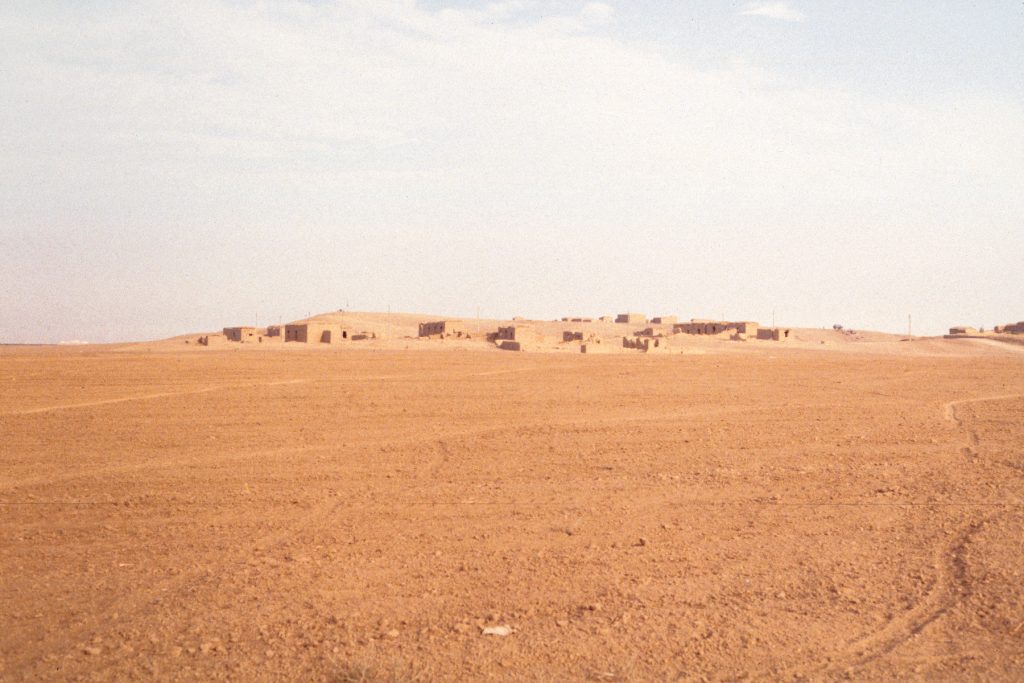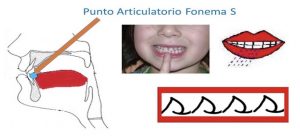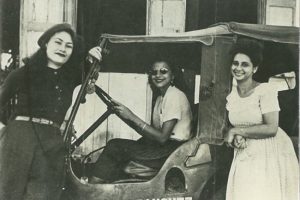Scholars have spent decades researching the origins of civilization. Most scholars have traced its roots to the land of Mesopotamia, which is often called “the Cradle of Civilization.” Initially, scholars believed that the oldest cluster of city-states making up the first civilization was in Southern Mesopotamia, known as Sumer; however, a new city-state found in the ruins of Northern Mesopotamia may have existed even earlier than that of Sumer. This once thriving and prosperous city may have come to an early end; it may have been the first city to have been destroyed by war. This city was Tell Hamoukar.1
Tell Hamoukar was a city located in what is known today as Syria. The city is currently believed to have existed as far back as 5000 years ago, during the Ubaid period (6500-3800 BCE). This is the same period during which Ur and Uruk of Sumer were also developing into complex societies. However, fossils and treasures found within Hamoukar do bear resemblance to those found in the other two, which suggests that Hamoukar could have pre-dated those other cities by several centuries.1

Most Mesopotamian cities were formed near rivers and bodies of water because of their irrigation potential for agriculture. Unlike these other cities, Hamoukar developed away from major waterways, but it possessed fertile soil. Crates and other tools not normally found within the region, such as obsidian, laid scattered around Hamoukar. This suggests that Hamoukar was a trading port, and one of the first of its kind.3
Scholars are gradually coming to see Tell Hamoukar as having been possibly one of the earliest complex societies. Many of the pots, doors, and items found around Hamoukar bare symbols to denote ownership. This was done at a time before written language had been invented.4 Each seal possessed different pictures, such as lions or kissing bears, and were stylistically different from seals found in other regions. Infant burial grounds and eye idols, as well as ovens and other tools for food preparation, were also recovered.5.
Tell Hamoukar’s prosperity was not meant to last, however, as it soon found itself under the threat of invasion. Littered around the ruins of the once mighty city lie over 1,200 clay bullets and 120 clay balls. Scholars hypothesize that these oval shaped bullets may have been launched from slings and hurtled towards some foe with deadly accuracy. Many of these bullets were flat, which suggests that the clay had not fully hardened before being slung. It is possible that there had been an attack on Hamoukar, and that it proved to be a greater battle than the invaders had originally anticipated. The defenders may have used all of their ammunition and were forced to create new rounds during the battle.6
Nonetheless, scholars believe that the siege of Tell Hamoukar was probably a success. Citizens fled as the once proud city soon burned to the ground.7 While the invaders have not been identified, many of the weapons match Uruk designs, and it is believed that they are the ones who overtook the city, though their exact reason remains a mystery. The dating of the weapons suggests that this was one of the earliest recorded battles in history.8
- Lewis Lord, Richard J. Newman, and Marianne Lavelle, “Chaos over the Capital,” U.S. News & World Report, June 5, 2000, 18. ↵
- Lewis Lord, Richard J. Newman, and Marianne Lavelle, “Chaos over the Capital,” U.S. News & World Report, June 5, 2000, 18. ↵
- Andrew Lawler, “North versus South, Mesopotamian Style,” Science, 312, no. 5779 (June 2006): 1461. ↵
- Andrew Lawler, “North versus South, Mesopotamian Style,” Science, 312, no. 5779 (June 2006): 1461. ↵
- McGuire Gibson and Mohammad Maktash, Antiquity 74 Issue 285 (Sept, 2000): 477 ↵
- Zach Zorich, “Relics of the Very First War,” Discover 27, no. 3 (March 2006): 12. ↵
- Andrew Lawler, “North versus South, Mesopotamian Style,” Science, 312, no. 5779 (June 2006): 1461. ↵
- Zach Zorich, “Relics of the Very First War,” Discover 27, no. 3 (March 2006): 12. ↵



36 comments
Valeria Perez
I find it truly amazing how early civilizations thrived under harsh situations. Ancient societies prove time and time again how resourceful and creative humans can be.
It was also interesting how Hamoukar’s attackers used clay as a weapon, I had never heard of that. The concept of land ownership and the different seals even before writing existed is fascinating! Their downfall also makes me wonder, what happened to the people from Hamoukar?
Daniela Duran
I have always been astonished by all the discoveries that can be made through the studying of the small remainings of a civilization. It was fascinating to read about the way in which archeologists and scholars slowly come to discover facts about the life and events of the people who lived in Tell Hamoukar. I was particularly intrigued by the evidence for the battle! The fact that some clay bullets were found on the floor, simply makes me admire how much our civilization has developed and grown ever since. I do not even understand how such a material could be used as a deadly weapon. It is quite disappointing that we do not yet know firmly who the attackers were, but this also adds a bit of mystery to the entire story, which makes its more intriguing and attractive. I truly admire how the labels on the objects were used as sings of possession even before language had being established! It is great to look back to the times where it was all so practical and different in comparison to the nowadays development of society!
Christopher Hohman
Nice article. I had never heard of Tell Hamoukar until now. It is weird to think that perhaps the Sumrians were not the first people to develop into a complex society because that is so often what we learn in school. It just goes to show you that history is constantly evolving to fit new evidence being uncovered all the time. We once thought Sumer was where the first city states developed now we have found Tell Hamoukar. this changes how we think about this time period. maybe there might even be more uncovered cities like this one waiting to be discovered.
Steven Hale
I wonder how often conflicts or battles broke out before Hamoukar was settled. Since settling land was a new concept, fighting over that land would also be new. Instead of the attackers or defenders running out of ammunition, is it possible the soft clay bullets mean that humankind was new to conflict and did not yet know how to make efficient weapons?
Caroline Bush
Interesting article! Before reading this article I did not know anything about the tale of Hamoukar so this was defiantly interesting to read. I thought it was interesting how this civilization was so advanced compared to other civilizations during or before their time. I also found it interesting how such an advanced civilization was destroyed and yet we know so little about what actually happened. Overall this was a very interesting article that was very well detailed.
Constancia Tijerina
I always found history to be a very important subject to know about, and not knowing about Tell Hamoukar before reading this article made me come to a realization of how little we know of the beginnings of civilization. I have not had nay knowledge of this part of history which is why i find it so interesting and amazing of how advanced us humans really are. What intrigues me most about this article is how advanced this civilization was before the other known earlier civilizations such as Sumner. The author makes the article enjoyable and intriguing for all readers, well done!
Samuel Ruiz
I did not understand the title at first, but as I read the article, it hit me. I liked the play on words in relation to Tell Hamoukar being the oldest discovered form of civilization. It was interesting to read about forms of bullets that they used as weaponry and the possibility of a battle coming around and hindering their supply.
Arianna Kennet
I’ll start off by saying I have never heard of Tell Hamoukar before, so this is new information to me. Its interesting to know how Hamoukar was once a trading pot too, and that evidence of that was found. I wonder how the ovens and other tool for food preparations looked back then, surely it is not as developed as it is now so I wonder. New fact I learnt too was that this was possibly one of the earliest recorded battle ground in history.
Didier Cadena
I honestly had never heard of Tell Humoukar before reading this article, so it was interesting to read about it. It was surprising to read about what could have been the first trading port in human history. I don’t know too much about ancient history, so it was extremely informative to learn about one of the first actual cities in history. The article does a great job of giving an account of something that I had no idea about, and still making it fun to read.
Kailan Pena
I had no idea Tell Hamoukar existed before reading this very informative article. I always thought Sumer was the oldest city, but I can easily believe this city is older, since I don’t really know too much about ancient history. It’s almost sad that this civilization was torn apart by war and that there’s no way to know what happened to the people that lived there, but it’s still very interesting nonetheless.